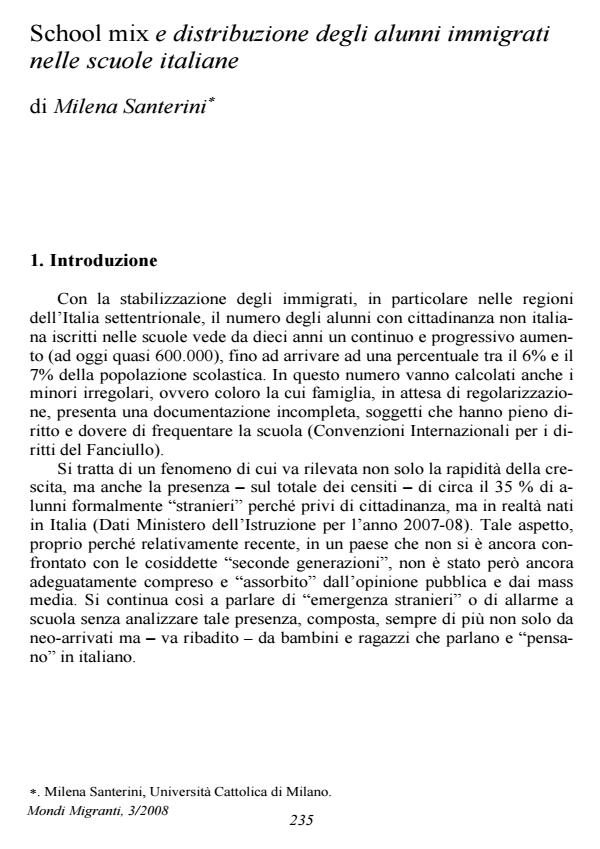School mix e distribuzione degli alunni immigrati nelle scuole italiane
Titolo Rivista MONDI MIGRANTI
Autori/Curatori Milena Santerini
Anno di pubblicazione 2009 Fascicolo 2008/3 Lingua Italiano
Numero pagine 15 P. 235-249 Dimensione file 161 KB
DOI 10.3280/MM2008-003013
Il DOI è il codice a barre della proprietà intellettuale: per saperne di più
clicca qui
Qui sotto puoi vedere in anteprima la prima pagina di questo articolo.
Se questo articolo ti interessa, lo puoi acquistare (e scaricare in formato pdf) seguendo le facili indicazioni per acquistare il download credit. Acquista Download Credits per scaricare questo Articolo in formato PDF

FrancoAngeli è membro della Publishers International Linking Association, Inc (PILA)associazione indipendente e non profit per facilitare (attraverso i servizi tecnologici implementati da CrossRef.org) l’accesso degli studiosi ai contenuti digitali nelle pubblicazioni professionali e scientifiche
School mix and distribution of immigrant students in the italian schools - The way immigrant students are distributed in the Italian schools appears unequal, both at regional and at local level, and also in the single schools and classes. The article reflects upon the consequences of such phenomenon and on the strategies to be carried out in order to prevent the building of "separate classes", mostly attended by students whose citizenship is not Italian. The article takes into account the ways distribution is carried out in several European countries - and in particular the case of the carte scolaire in France -, analising the policies of orientation of enrolments and the risks of school apartheid. For what concerns Italy - where there is a variety of situations because of the liberalisation of accesses - the risk of an unequal distribution and of an -inner segregation- is confirmed, which could be emphasized by special measures in favour of immigrants. Finally, the article introduces the reasons for the school mix and the debate on the consequences of heterogeneity in class, which is linked to a greater equity but not necessarily to a lower scholastic achievement, as long as it is supported by measures of complex instruction, differentiated didactic, intercultural prospective, and a planning at local level based on the pact between school and territory.
Keywords immigrants school inequality intercultural education distribution;
Milena Santerini, School mix e distribuzione degli alunni immigrati nelle scuole italiane in "MONDI MIGRANTI" 3/2008, pp 235-249, DOI: 10.3280/MM2008-003013